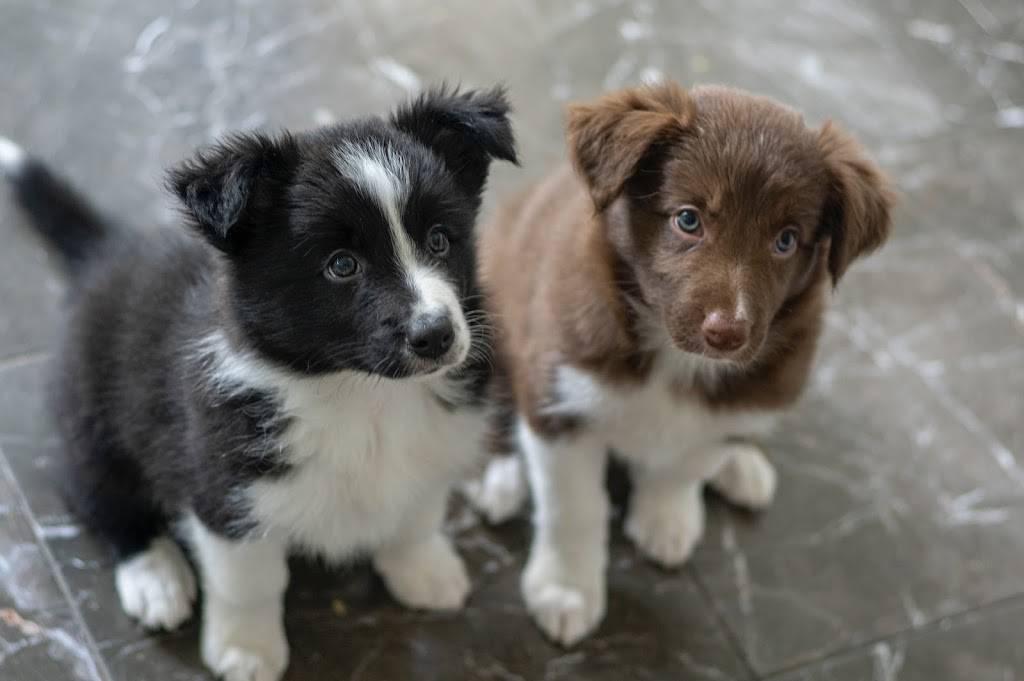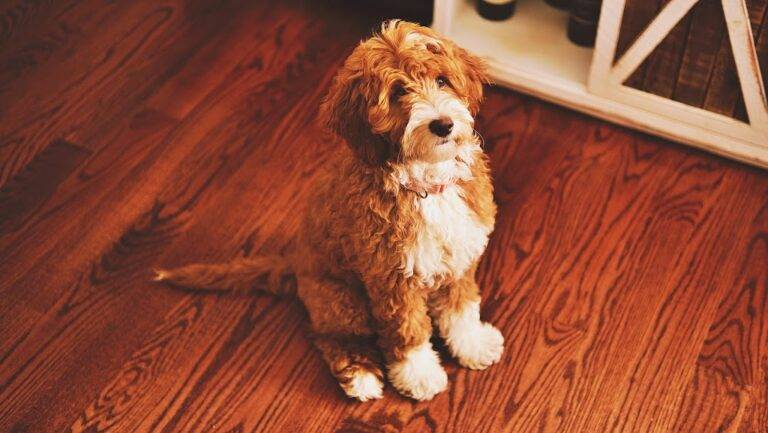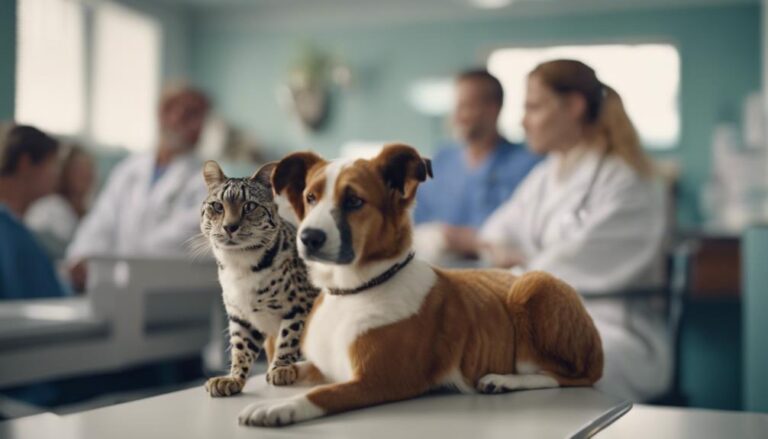Basic Dog Training
Every dog owner wants a well-behaved, obedient pet. It’s essential to start with basic dog training to achieve this goal. Even if dog sports and events aren’t on your radar, your furry friend will benefit greatly from learning fundamental commands and manners. From mastering the art of walking on a leash to feeling at ease around strangers, these skills will ensure a positive relationship between you and your canine companion.
It’s never too early or too late to get started on basic dog training. In fact, the earlier you begin, the better. Teaching your four-legged friend essential socialization, health, and grooming habits will create a strong foundation for a well-rounded, happy pet. With the right guidance and consistency, you’ll see significant improvements in your dog’s behavior and overall well-being. So, let’s dive into the world of basic dog training and set your pup up for success.

Socialization: The Key to a Well-Behaved Dog
Introduction
Socialization is an essential component of basic dog training. It helps your puppy develop the social skills necessary to interact well with humans and other animals. It also prevents them from developing anxiety, fear, or aggression later on in life. In this article, we will discuss how to socialize your puppy effectively.
Handling
Handling your puppy is a crucial part of socialization. Puppies should be cuddled and handled daily by as many different people as possible. Keep the contact gentle and pleasant for the puppy. Hold the puppy in different positions, gently finger her feet, rub her muzzle, stroke her back and sides, and look in her ears. This will help your puppy learn to be comfortable around humans.
Sounds
Acclimating your puppy to different sounds is also essential. Expose your puppy to kitchen sounds, telephones ringing, children playing, sportscasters yelling on TV, radios playing, buses moving by, and so on. However, be careful not to overwhelm your puppy with too much noise too quickly.
Food Bowl Exercises
Teaching your puppy to enjoy having people approach her bowl while she’s eating can help prevent resource guarding. Walk up to your puppy while she’s eating her food, drop an even tastier treat into her dish, and walk away. Repeat once or twice during each meal until your puppy is visibly excited about your approach. Then walk up, physically pick up her dish, put in a treat, give the dish back, and walk away.
Teach Your Puppy to Be Alone
Puppies should learn to tolerate being completely separated from other people and animals every day to avoid developing separation anxiety. You can start by leaving your puppy alone for a few minutes and gradually increase the time. This will help your puppy get used to being alone, and they won’t get anxious or scared when left alone.
Prevent Aggression
Confrontational approaches like pinning your dog down or scruffing him frequently backfire and create the aggression dog owners seek to avoid. Focus on rewarding correct behavior and preventing undesirable behavior to teach your puppy human rules and build a trusting relationship.
Introduce Your Puppy to New People
Introduce your puppy to several new people every day, keeping the interactions pleasant and unthreatening. Focus especially on setting up pleasant encounters with unfamiliar men and well-behaved children. This will help your puppy learn to be comfortable around new people.
Prevent Biting
Provide appropriate toys to redirect your puppy’s biting. When your puppy bites too hard during play, make a sudden noise (“Ow!”) and end the game to help him learn to use his mouth gently. Never squeeze your puppy’s mouth shut, yell at him, or hold him down. This will frighten him and likely make biting worse.
——————————-
Get access to the best pet discounts, items, and training by clicking the link below
————————————-
Obedience Training
Obedience training is an essential foundation for a well-behaved dog. It helps establish a bond between you and your furry friend while promoting good behavior and manners. While many dog owners opt to train their puppies themselves, obedience training classes with certified instructors can be highly beneficial for both you and your pup.
Benefits of Obedience Training
Obedience training can help your dog learn basic commands such as sit, stay, come, and heel. It also teaches your dog to listen to you and respond appropriately, making it easier to communicate and prevent unwanted behaviors. Additionally, obedience training can help your dog become more socialized, confident, and well-behaved around other people and animals.
Choosing the Right Obedience Training Classes
When selecting an obedience training class, it is essential to consider various factors to ensure that you and your pup get the most out of the experience. These factors include the training methods used, the compatibility of the instructor’s personality with yours, the appropriate classes for your needs, and the certifications of the instructor.
Distance should also be a consideration, but convenience should not be the only factor that influences your decision. You want to ensure that you and your pup feel comfortable with the instructor and the environment in which the training takes place.
Home Training vs. Group Classes
There are benefits to both home training and group class training. Some trainers will come to your home and provide private one-on-one training, while others opt to train their own dogs. Home training may allow you and your dog to focus more on each other, while group class training helps your dog learn to focus even when there are distractions from other dogs.
When observing a class, take note of the dogs, the instructor, and the overall environment. If you don’t feel comfortable with a particular training school, keep looking for one where you and your pup feel comfortable and safe.
Trainer vs. Behaviorist
It’s important to note that there are differences between trainers and behaviorists. Behaviorists can also be trainers and/or veterinarians, but not always. Trainers are equipped to handle symptoms, but not necessarily the underlying causes of the symptoms.
——————————-
Get access to the best pet discounts, items, and training by clicking the link below
————————————-
Leash Training for Dogs
Leash training is an essential aspect of teaching your dog how to walk politely on a leash. It is a necessary skill that will go a long way in ensuring that you and your dog enjoy walks together. Here are some helpful tips for leash training your dog.
Introduce your Puppy to the Leash and Collar
Before starting leash training, it’s important to introduce your puppy to the collar and leash. Let your puppy wear the collar and leash for short periods of time while playing with him and giving him treats. This way, he will associate the collar and leash with enjoyable activities.
Teach a Cue
Introduce your puppy to a sound cue that means “good things are coming.” Use a clicker, a word like “yes,” or cluck your tongue. In a quiet, distraction-free area, make the sound. When your puppy looks at you, reward him with a treat. Repeat this process until your puppy associates the sound with treats and looks at you whenever he hears it.
Make Your Puppy Come to You
While your puppy is still wearing the collar and leash, back away a few paces and call him to come to you. Reward him when he reaches you. Repeat this process, backing away more each time, until your puppy comes to you every time you call him.
Practice Indoors
Once your puppy is comfortable coming to you on a leash, practice walking with him in a room with few distractions. Offer treats and praise as he gets used to walking on a leash indoors.
Take it Outside
When your puppy is comfortable walking on a leash indoors, it’s time to take him outside. There will be many new distractions, so be patient and keep the first walks short. If your puppy gets distracted or starts to pull, make the cue sound and move away from the distraction. Reward him when he comes to you.
Leash training can take time and patience, but it’s an essential skill to teach your dog. With practice, your dog will learn to walk politely on a leash and enjoy walks with you. For more information about dog training and behavior, visit the American Kennel Club’s website at https://www.akc.org/.
House Training Your Dog
House training your dog is one of the most important things you can do for your pet. It requires patience, consistency, and a commitment to training your dog properly. The process of house training can be frustrating at times, but it is essential to get your dog on the right track. Here are some tips and guidelines to follow when house training your dog.
Establish a Routine
Establishing a routine for your dog is essential when house training. Dogs thrive on routine, and it helps them to understand what is expected of them. Take your dog outside every two hours to go to the bathroom. This routine will teach your dog when it is time to go outside, and they will learn to hold their bladder until it is time to go.
Pick a Bathroom Spot Outside
Pick a specific spot outside for your dog to go to the bathroom. Using the same spot every time will help your dog to understand where they are supposed to go. Use a leash to take your dog to the spot every time, so they know where they are going.
Reward Your Dog Every Time They Eliminate Outside
Rewarding your dog every time they eliminate outside is crucial to the house training process. Praise or give your dog a treat immediately after they have finished going to the bathroom. This reward teaches your dog what is expected of them, and they will learn to go to the bathroom outside instead of inside.
Pick Up Your Dog’s Water Dish Before Bedtime
Picking up your dog’s water dish two and a half hours before bedtime can reduce the likelihood that they will need to go to the bathroom during the night. Most dogs can sleep for approximately seven hours without needing to go outside. If your dog does wake you up, take them outside to the same spot and then return them to bed.
Put Your Dog on a Regular Feeding Schedule
Putting your dog on a regular feeding schedule can make house training easier for both of you. Feeding your dog at the same times every day can help them eliminate at consistent times as well. Depending on their age, dogs may need to be fed two or three times a day.
——————————-
Get access to the best pet discounts, items, and training by clicking the link below
————————————-
Crate Training: Creating a Safe and Secure Space for Your Dog
When it comes to basic dog training, crate training is an important aspect that should not be overlooked. Not only does it provide a safe and secure space for your pooch to call its own, but it can also help calm anxiety and prevent destructive behavior. In this section, we will explore the steps to successfully crate train your furry friend.
Step 1: Choose the Right Crate for Your Dog
Finding the right crate for your dog is crucial to the success of crate training. You want to choose one that is durable, comfortable, and flexible for the type of training you are doing. Wire crates work well for most dogs, but if your pup prefers to sleep in the dark, kennel or airline crates may be a better option. It is important to choose the correct size crate for your dog’s adult size and to use a divider to grant them more space as they grow.
When looking for a crate, it is also important to consider safety features, such as secure latches and non-toxic materials. For more information on choosing the right crate for your dog, check out this helpful guide from the American Kennel Club (AKC).
Step 2: Establish the Proper Mindset
The key to successful crate training is to associate the crate with a relaxed mindset. To do this, start by putting your dog in the crate when they are calm and relaxed, rather than during playtime. Gradually increase the amount of time they spend in the crate, starting with just a few minutes at a time and working your way up.
Step 3: Determine How Your Dog Will Be Most Comfortable
While some dogs may enjoy a cozy bed or blanket in their crate, others may prefer a solid surface. It is important to experiment with different bedding options to see what works best for your furry friend. Keep in mind that some dogs may chew or soil their bedding, so it may be best to start with a simple mat and work your way up.
Step 4: Give the Dog a Treat After They Go Into the Crate
Positive reinforcement is key when it comes to crate training. Reward your dog with a special treat or toy when they enter the crate, such as a frozen Kong filled with peanut butter. This will encourage them to view the crate as a positive and enjoyable space.
Step 5: Keep an Eye on the Time
While crate training can be a helpful tool for preventing destructive behavior, it is important to remember that your dog still needs plenty of time outside of the crate for play, exercise, and bathroom breaks. Avoid leaving your dog in the crate for extended periods of time, as this can lead to boredom and frustration.
By following these steps and remaining patient and consistent, you can successfully crate train your dog and provide them with a safe and secure space to call their own. For more information on basic dog training, check out our other helpful articles and resources.
Health and Safety Training for Basic Dog Training
When it comes to dog training, health, and safety training is an essential aspect. A well-trained dog should not only follow commands but also know how to keep themselves safe and healthy. Here’s a guide to help you teach your furry friend the basics of health and safety training.
1. Teaching your dog to come when called
One of the most crucial aspects of health and safety training for a dog is to teach them to come when called. This command can help keep your dog safe in emergency situations. Start by calling your dog’s name and saying “Come” in a happy tone. When your dog comes to you, reward them with a treat and praise. Repeat this exercise several times a day until your dog responds to the command consistently.
For more information on teaching your dog to come when called, check out this article.
2. Basic first aid training for dogs
As a dog owner, you need to be prepared for any injuries or illnesses that your furry friend may experience. Basic first aid training can help you provide immediate care until you can get your dog to a veterinarian. The American Red Cross offers an online course in pet first aid that covers everything from checking your pet’s vital signs to handling emergencies such as bleeding and seizures.
To learn more about the American Red Cross pet first aid course, visit their website.
3. Teaching your dog to avoid dangerous objects
Dogs are naturally curious creatures, and they may come across hazardous objects such as sharp tools or toxic substances. Training your dog to avoid these objects can help keep them safe. Start by placing a hazardous object on the ground and saying, “Leave it” in a firm tone. When your dog backs away from the object, reward them with a treat and praise. Repeat this exercise with different objects until your dog learns to avoid them.
For more information on teaching your dog to avoid dangerous objects, check out this article.
4. Teaching your dog to walk on a leash
Walking your dog on a leash is an essential aspect of health and safety training. It can help prevent your dog from running into dangerous situations, such as traffic or aggressive animals. Start by attaching a leash to your dog’s collar and letting them get used to the feeling of it. Then, start walking with your dog and say “heel” in a firm tone. When your dog walks by your side, reward them with a treat and praise. Repeat this exercise until your dog learns to walk on a leash without pulling or wandering.
For more information on teaching your dog to walk on a leash, check out this article.
Conclusion
In conclusion, basic dog training is important not only for those who plan on competing in dog sports or events but for all dogs. It is crucial that dogs learn how to walk well on a leash, be comfortable around strangers, and receive proper socialization. Through consistent training, dogs can develop good behavior and positive habits that will benefit both them and their owners. Additionally, basic training can help prevent behavioral issues, such as excessive barking, biting, and jumping. By taking the time to train your dog, you can establish a strong bond and create a happy and healthy living environment for both you and your furry friend. Remember, it’s never too late to start training your dog, and the benefits are well worth the effort!
FAQ:
Do you offer group classes?
No, we only offer private one-on-one sessions. This allows our trainer to focus entirely on your dog’s specific training needs.
What breeds of dogs do you train?
We train all breeds of dogs, from Chihuahuas to Great Danes, and everything in between.
What training methods do you use?
We use a positive reinforcement training method, which focuses on love and respect instead of food as a motivator. Our training is based on the way a mother wolf would train their pups in the wild.
Is my dog too old for training?
No, your dog can be trained at any age. However, it’s important that you, as the owner, are willing to learn too.
How do I get the training process started?
The first step is to book a home visit with our trainer. During this visit, we will assess your dog’s training needs and discuss our training philosophy and methods. This visit usually takes about an hour and can be scheduled on weekdays or weekends.
How long does the training take?
The length of training depends on the type of program you choose. Private lessons are sold in blocks of 5 one-hour sessions, scheduled once per week for a period of 5 weeks. Our Board and Train program includes 10 consecutive days and nights of training with our trainer, followed by 5 follow-up lessons for the dog owner to learn and reinforce the training.
Do I really need 5 lessons?
Yes, we recommend at least 5 lessons to fully learn and practice the commands and techniques taught during training. This ensures that both you and your dog are comfortable with the training process and have mastered the necessary skills.
We hope this section has answered some of your basic questions about dog training. If you have any additional questions, please don’t hesitate to contact us.








